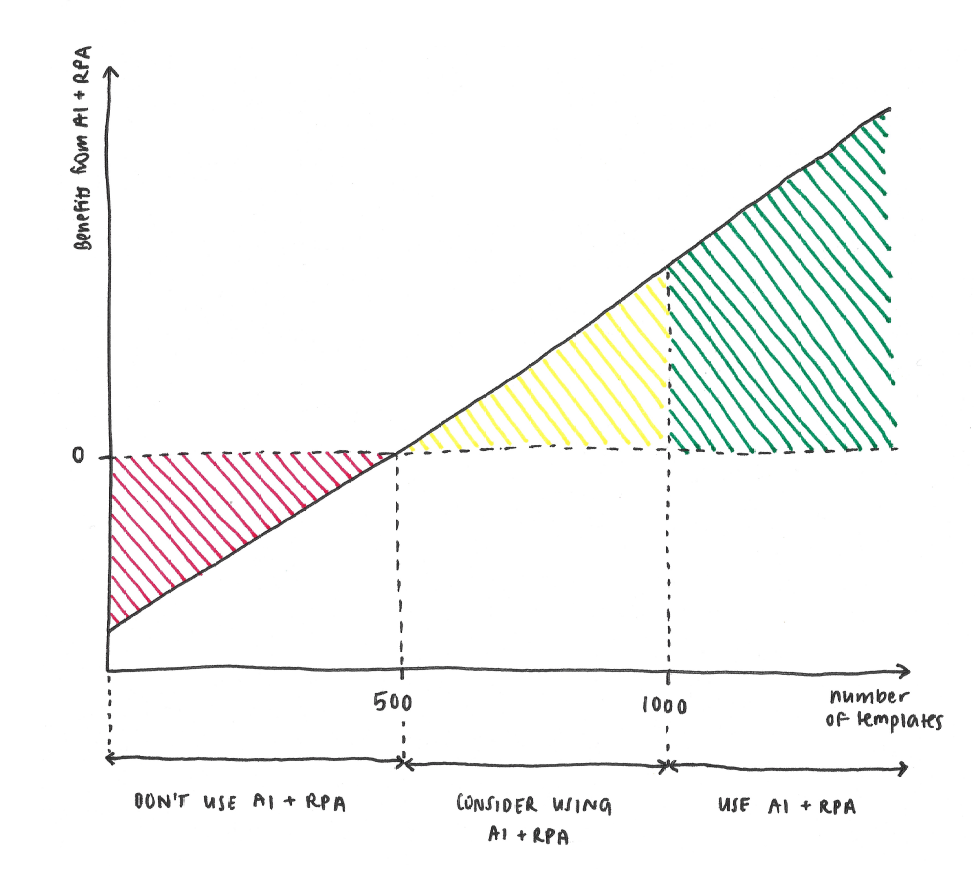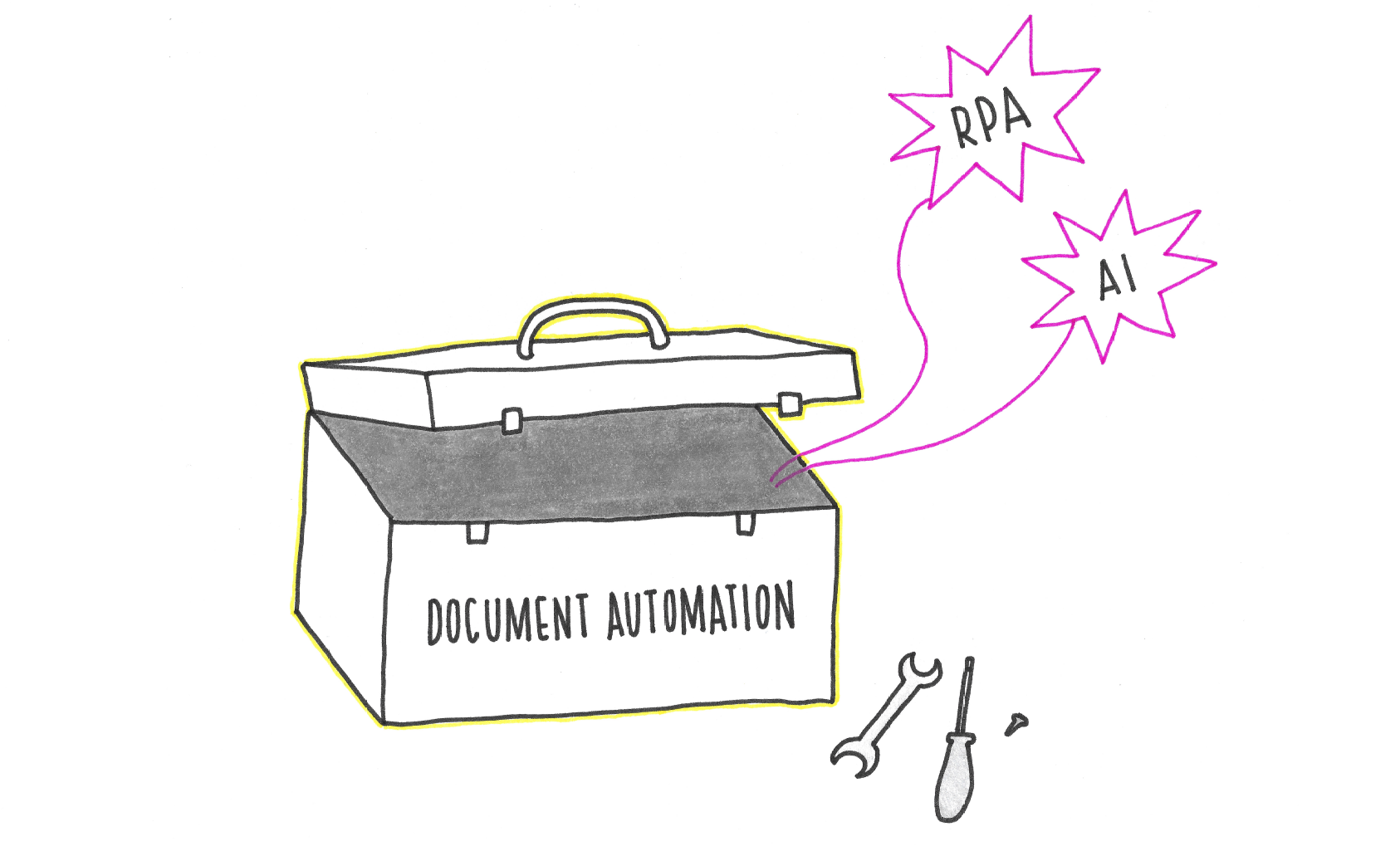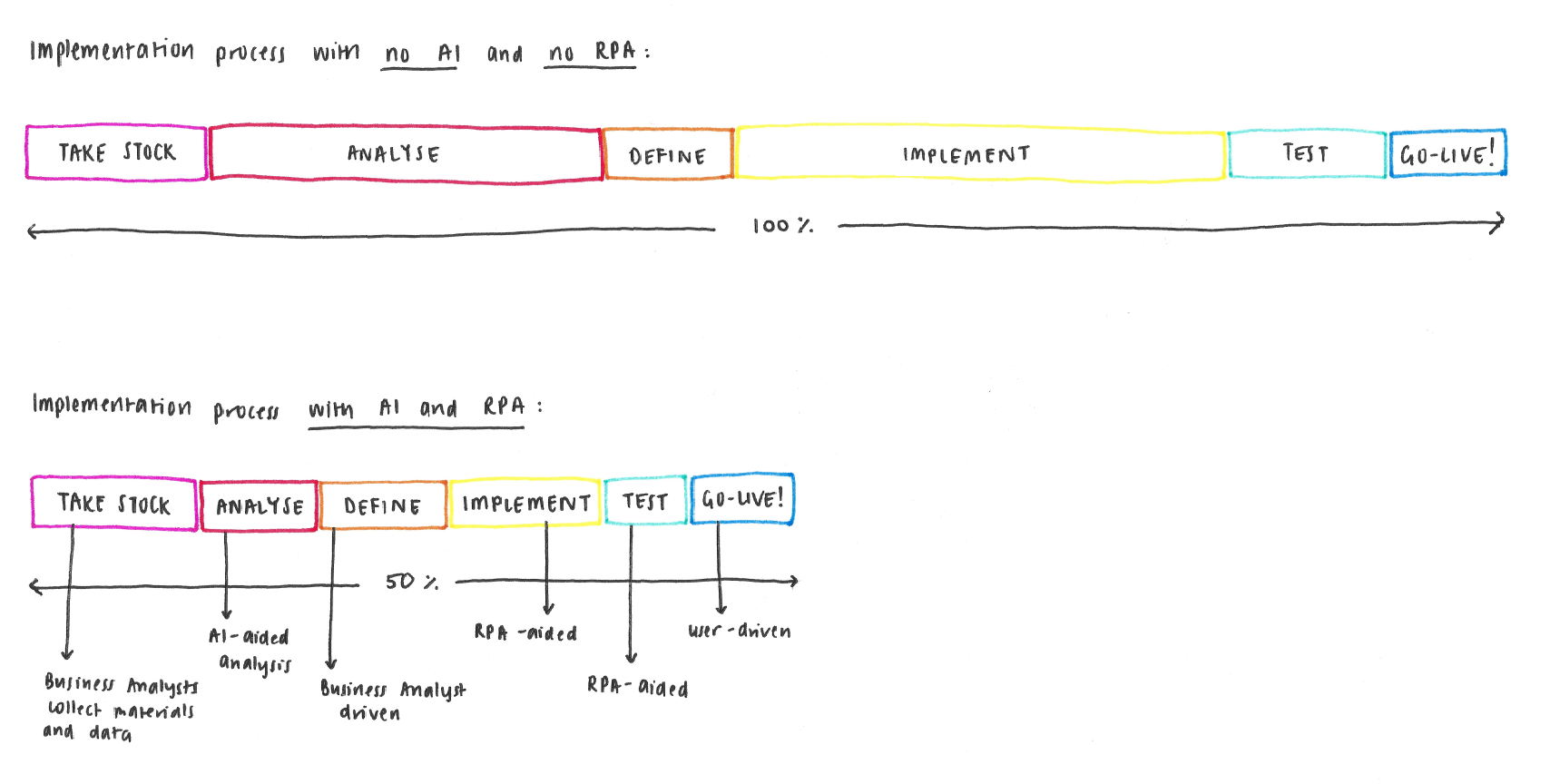In a previous blog post we talked about the complicated relationship between Artificial Intelligence (AI) and document automation. We concluded that, at the moment, better results can be achieved through document automation that doesn’t have deep learning at its core.
Robotic Process Automation (RPA) is another recent buzzword for technologies that have been around for a while, and help automate tasks that people perform using computers. The relationship of RPA and document automation is also complicated. At one end of the spectrum, document automation can be considered to be a highly specialised RPA for creation of documents; others might argue there is no relationship at all.
However, AI and RPA can play an important role outside of the core document automation engine, particularly at the time of solution implementation.
We often find that one of the major barriers to adoption of document automation is the implementation effort and associated cost. The implementation teams that have good command of AI and RPA – may they be tools tailor made by the document automation provider or well-configured off-the-shelf products or services – will become much more productive and accurate than the ones that don’t.
The image below shows what can be involved in an implementation of document automation software by organisations who need to maintain hundreds or thousands of templates.
The above illustration focuses on the automation of documents itself, and doesn’t include any work related to integration with other systems, setting up of the infrastructure, training, and others.
Let’s consider an example implementation process. In the first scenario below, implementation doesn’t use any AI or RPA; in the second scenario, it does.
Comparison of implementation duration with and without AI and RPA.
As you can see, automation implementation with the help of AI and RPA is significantly quicker. But let’s have a look at where and how the improvements have been realised.

There is no improvement here. In this step we gather all materials – templates, documents, process description, business logic description – and verify that they are relevant to the intended future state of the process.

This is where, in this example, AI analysis helped save at least 50% of the time needed. Machines can “read” through hundreds or thousands of documents quickly, and assess commonalities and differences. The human business analyst can then go straight to the content instead of having to search for it or worrying that anything was missed.
If the source information is well structured, AI can also help improve the analysis of business logic, processes, and data requirements.

Defining how the content will be reused, what the template-related business rules are, and what data templates need is still knowledge and skill that only humans have. That is until we find a way to download human brains into AI machines. No time saving here.

Major time savings can be achieve through the use of RPA. The RPA helps implement what is defined in the previous stage into templates. There is some time needed to set up and test RPA itself, which is included in the implementation time. This means that the more templates you have, the more beneficial the use of RPA can be.

Here we show about 60% reduction in testing time. RPA can help speed up generation of test samples and can run error evaluation or compare the actual output with the expected output.
Note: You may notice that the testing stage is shown as subsequent to the actual implementation of automation. In real life, testing is often incremental, taking place as each template is automated. We separated it in this way to show the different impact of AI and RPA on each of the stages.

This is often an organisational change management process. AI and RPA usually are not used and therefore no time saving is realised at this stage.
When should I use AI and RPA?
While AI and RPA have improved a lot recently, there is always time and effort required to set them up for each implementation. This means that the use of AI and RPA makes for a good business case with larger volumes of templates. The tipping point at which AI and RPA bring significant benefits depends on the size of templates, and their automation density (do your templates have a lot of static text that never changes, or are they highly dynamic?).

Whether or not to use AI and RPA depends largely on how many templates you’re automating.
As a general rule, you don’t really need to worry about AI or RPA unless you have more than 500 templates to automate in your project. Note that we have also worked on projects including over 1000 templates, where the use of AI could not be justified. However, the more templates you’re automating, the bigger the benefit of AI and RPA.
What this boils down to is the expertise of your implementation team. AI and RPA are just tools in our toolbox. There is no need to use them just because AI and RPA are the buzzwords of the day. However, if used well, AI and RPA can turn impossibly resource-intensive projects into tremendous wins.











